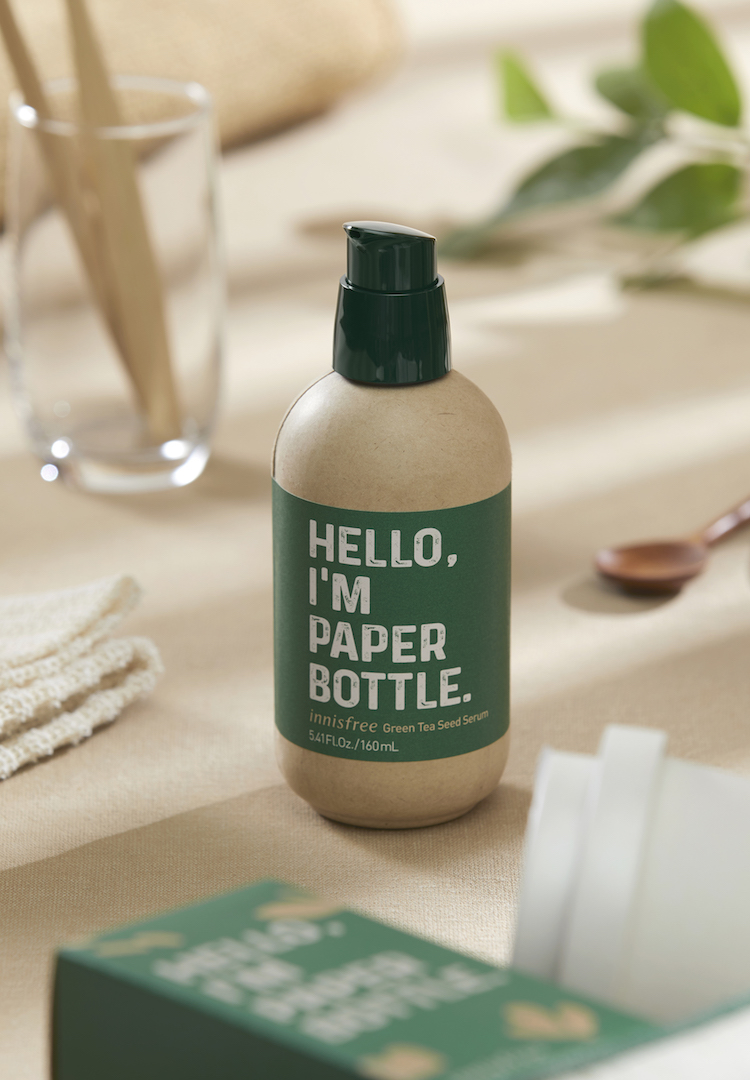Is paper packaging the future of beauty?
WORDS BY ISABELLE SACKS
When sustainability meets innovation.
As a skincare addict, I purchase my fair share of online beauty hauls, and opening them up never fails to remind me of playing with nesting dolls. Each product comes in a jar or bottle or tub made of multiple components, which are typically in some sort of product box, which is then nestled inside of a larger box that may even be packed with bubble wrap.
Which all goes to say that, for the sake of safely transporting the single toning mist that I absolutely had to have (you can’t definitively tell me that it won’t be the secret to perfect skin), a lot of waste is produced.
The beauty industry can be pretty wasteful
Beauty undoubtedly has a packaging problem. The global beauty industry creates 120 billion units of packaging every year, most of which isn’t recyclable. But as it turns out, creating packaging that is better for the earth is actually really hard.
Beauty products themselves often need to be packaged within containers that are made up of a number of different materials, including plastic, glass, and aluminium. The use of mixed materials for a single item makes recycling complicated, and despite our best efforts to recycle them, many of those materials can wind up in landfills anyway.
Glass and aluminium can be recycled and up-cycled endlessly. But (and it’s a big but), it’s more expensive and it’s heavier, which means it not only costs more to ship but also generates significantly more emissions to transport. Recyclable plastic is cheaper, lighter and more accessible, but it can only be recycled one to three times before ending up in landfill.
Paper? But isn’t that just going to be a soggy mess?
One material that hasn’t been given its due up until recently is paper. It’s incredibly light, and more efficient and cheaper to recycle than most other materials. If you measure by weight, more paper is recovered for recycling than plastic, aluminium and glass combined.
The biggest problem has been that most cosmetic formulas contain 70 to 95 per cent water (that’s a discussion for another day), and as we all know from that time our bottle leaked in our bag rendering our fave book a soggy mess, water is the enemy of paper. Creating packaging that can contain the product without sacrificing the formula or diminishing the efficacy has meant including a thin inner plastic layer.
Many brands are exploring paper as an alternative to plastic
L’Oréal-owned brand La Roche-Posay achieved a global first earlier this year by packaging its Anthelios sunscreen in a cardboard tube, launching in the French market in May with plans to expand globally later this year.
The cardboard tube solution reduces plastic usage by 45 per cent. The innovative tube is the first in a long line of cardboard solutions to follow, with Kiehl’s set to become the next brand to adopt the cardboard packaging solution in 2021.
Korean beauty juggernaut Innisfree is the latest to throw its hat into the ring with the launch of limited-edition paper packaging for its popular (as in one-bottle-sold-every-seven-seconds popular) Green Tea Seed Serum.
The brand’s paper packaging will be available in Australian stores from September 1 and is made with 51.8 per cent less plastic. It is easily recycled by peeling off the label and pulling the two halves of the moulded paper shell away from the thin inner plastic container to recycle separately.
While half the amount of plastic isn’t perfect, it’s certainly a significant step in the right direction.
“We are committed to seeking alternative and more sustainable packaging solutions. There are undoubtedly plenty of simple opportunities to reduce the use of plastic. The Green Tea Seed Serum paper bottle is a small but a significant step towards more sustainable beauty, and from here, we will strive to further develop product packaging that has a positive impact on our environment and the Earth,” said Nikki Novakovic, marketing manager for Innisfree Australia.
This is going to take all the Rs we can get
In the last ten years, we’ve seen seismic shifts in consumer attitudes and trends towards cleaner and more sustainable beauty products, and it’s exciting that companies are starting to step up to the plate with all sorts of innovative solutions.
Cardboard is a great solution when we’re thinking about packaging that is more recyclable. But when we look to the future of packaging, we should also think about incorporating more of the other R’s – reusables and refillables. Case in point: Rihanna’s new Fenty skincare line made waves recently with its Hydra Vizor Invisible Moisturiser, which includes a refillable cartridge.
L’Oréal has committed to making all of its plastic packagings “rechargeable, refillable, recyclable, or compostable” by 2025.
Voltaire, a famous French philosopher, once said, “Perfect is the enemy of good”. I’m not entirely sure he was referring to the incorporation of more responsible skincare purchasing habits, but that’s how I’m going to take it. Even if it isn’t perfect, any progress made by me or the companies I buy from to combat our global waste problem is a positive shift and something I’m going to support.













